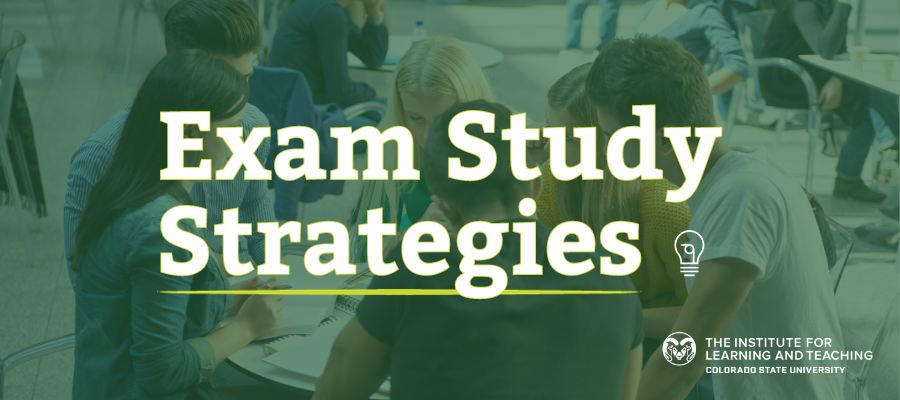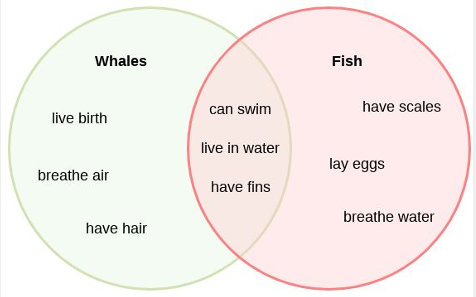Exam Study Strategies

Overview
Ah, exam season – it comes in a fury, and seems to approach faster every year. Stress levels skyrocket, workouts, diets, and other healthy habits begin to suffer, and the library becomes a second home. From fresh-faced first-year students to seasoned scholars, conquering exams involves more than cramming as much information into as little time as possible the night before the test.

Studying requires more than caffeine and concentration – it demands a well-structured study plan, effective strategies, and some self-discipline. We’re going to tell you all the secrets – lay out all of our cards on the table – that will not only help you ace your exams, but also transform your approach to learning.
Goodbye, last-minute panics and all-nighters.
Hello, efficient and effective exam study strategies.
Where Students Get It Wrong
- Just reading the textbook and their notes over and over (and over^∞)
- Using the same study strategies for everything
- Not actively learning, just reviewing the same content in the same way
- Not taking breaks
- Starting too late
- Studying just to pass the exam
Where Students Get It Right
- Actively transforming short-term memory to long-term memory
- Studying slightly differently for each subject
- Flashcards, practice tests, group learning, teaching the subject to others
- Study for 25 minutes at a time, take a 5-minute break (Pomodoro Technique)
- Regular review of material throughout the semester
- Study to learn key concepts that build on themselves in the future
Highlighting or underlining everything. Re-reading text over and over. Copying notes word-for-word. Grinding out hours of studying without a break. Multitasking. Memorizing words but not understanding them… sound familiar?
The Science of Learning
Short-Term vs. Long-Term Memory
It may sound simple, but we’re going to explain it: Short-term memory is the ability to recall a small amount of information from a recent time period. Long-term memory is the capacity to recall memories from a longer time ago (https://www.medicalnewstoday.com/articles/memory-loss). Short-term memory is when somebody gives you directions that you remember (mostly) successfully once and forget after. Long-term memories are things stored away in our brain that can be cued up either on demand (how to ride a bicycle, important dates like holidays or birthdays) or can be triggered by something else (think: a chord progression or a beat to a song you know and suddenly remember every word too).
At the beginning of all learning, you’re taking short term memory and turning it into long-term memory.
That’s it. That’s the secret. Pencils down, class dismissed.

Ok, ok, ok… If it were that easy, you probably wouldn’t be here. When it comes to studying for tests, it’s all about transforming your short-term memory into long-term memory.
Let’s EXAMine highly effective ways to get from short-term to long-term memory:
Study Strategies
Retrieval Practice
Retrieval Practice
This is a strategy that forces you to actively recall information from memory rather than passively rereading it. It’s a very powerful method to enhance long-term retention. Basically, the idea is that when you are actively recalling information, you are simultaneously strengthening the pathway in your memory to that information, making it easier to remember in the future. Retrieval has 3 steps:
- Recall – Instead of reviewing your notes or your textbook, you actively try to recall the information you’ve learned. This can include things like answering questions, summarizing key points in your own works, or explaining key concepts.
- Feedback – After you attempt to recall the info, check your answers or review the material to see how well you did. This helps you identify areas where you need improvement.
- Repeated Practice – Engage in repeated retrieval practice over time. Spaced repetition helps solidify information in your long-term memory – just make sure to change up the order of what you’re reviewing often!
Doing this strengthens retrieval pathways, but also helps identify gaps in your knowledge and focus on areas of improvement. Common techniques for retrieval practice include flashcards, self-quizzing, practice tests, and teaching material to someone else.

Practice Tests
Practice Tests
Creating and using practice tests can be a highly effective study strategy to prepare for exams. On top of using them as “scrimmages” for test time, you are actively engaging in material and enhancing your recall of information.
Creating Practice Tests
- Gather Key Concepts – Review course materials, notes, lectures and more, and identify any relevant resources to determine important concepts, topics, and information that may be on the exam
- Organize content – You may have a lot of information to try to figure out how to arrange in order to make it more manageable. Create specific areas of the subject and group them that way (need help? Try to manage it by chapters in your book)
- Write questions – for each topic, create a list of questions in different formats: multiple choice, fill in the blank, true/false, essay, or problem-solving. Try to mimic the types of questions that may be on the exam and vary the difficulty level. For Extra Credit: Find questions listed at the end of chapters in your textbook for reference and examples.
- Use previous exams or study guides – Think about it; If your instructor has included a question in a previous test, quiz, or homework, they probably did it for a reason.
Using Practice Tests
- Simulate Exam Conditions – Find a quiet, distraction free environment, set a timer that matches the allotted time for the real exam. This will help you budget your time management skills for the real exam. For Extra Credit: If possible, do this in the same seat or building you’ll take the actual exam in.
- Take the test – Sit down and take practice tests as if they were the actual exam. Try to answer questions without referring to your notes or textbooks. This way, you’ll find out what you do and do not know.
- Review Answers – After completing a practice test, review your answers. Keep note of what questions you answered correctly and which ones you aren’t sure about.
- Analyze Mistakes – For each question you get wrong, analyze where you went wrong. Was it a lack of knowledge, understanding, misinterpreting the question, or a lapse of memory?
- Repeat – Different questions, different question format, same comprehensive coverage and improvement.
Either in a small group or by yourself, try to come up with 3-5 questions on a specific topic. Keeping changing topics until all topics have at least a handful of questions.
Discuss the questions as a group and record all questions for use as a practice test. Ensure that when you have complete set of questions that you also have the correct answers to the corresponding questions! Doing this exercise broadens your perspectives and allows students to think like the professor.
Practice tests are most effective when used as an active learning tool. It’s a good way to measure how much information you know, but also how much you don’t know. The process of creating, taking, and analyzing your self-made practice tests reinforces your understanding and gets you ready to take a test on multiple levels.
Collaborative Learning
Collaborative (Group) Learning
Learning is an inherently social experience. In a lecture setting, you’re listening to your instructor and their experience and knowledge in their own words. When one single student asks a question or brings up an example, the rest of the class benefits from their interaction. Even when you are plainly reading any book, almost everyone benefits from the opportunity to discuss their findings or experiences with the book with other people. This type of discussion, debate, and sharing of perspectives is more memorable than slideshows.

Effective Group Study Strategies
Setting Standards
How long will you study for? Is this a set time during the week?
What technologies/resources should each member bring? Is there something everyone can benefit from? (EX: A study room any CSU student can reserve from the Morgan Library with a large whiteboard)
Set an environment and commitment to a set of standards that everyone can agree to. To get started with a few options, consider the following: Encouragement, flexibility, being comfortable asking questions and making mistakes, validating perspectives, and approaching learning as a team rather than as individuals.
While these standards may look different from group to group, the mission of all of this should stay consistent: Allowing everyone the opportunity to learn in community.
3:2:1 (Clearest to Muddiest) Point
This method is the easiest way to know the understandings of group members strengths and weaknesses from the jump. When you are in your group, have each person individually come up with:
3 topics they know well enough to “teach” to the others in your group
2 topics they do not understand and need further assistance with
1 possible test question
Based on this information, have each person “teach” what they know to ensure everyone in the group has a chance to teach, and that everyone has different ways to understand the topics. Often times somebody in your group can teach a topic that others do not understand well enough to teach, so you’re learning from each other (and high-fiving each other in the process, hopefully).
After writing the pair of topics individuals may not know, everyone works together to have a collection of understanding about those subjects, discussing main points, dissecting confusion, and developing knowledge about the understanding.
With the 1 test question, think about the main topics and different angles an exam may give you. For Extra Credit: Write multiple types of test questions: Multiple choice, true/false, short answer, summary, essay, etc.
Visual Learning Resources
Venn Diagrams

More of a visual learner? Create an empty Venn Diagram and pick 2 topics (3 max) and discover the relationships between the topics as a good visual technique for reviewing similar yet contrasting concepts. Venn Diagrams are are a great way to see shared characteristics or common elements. You can use words, phrases, or even symbols to represent the information in the circles. For Extra Credit: Consider using different colors to highlight information from each set as a more efficient way to distinguish and remember information.
If your test involves solving problems or making comparisons, you can create practice questions based on your Venn Diagram. Using the diagram above, you could create practice questions like “What characteristics are unique to whales?” or “What do whales and fish have in common?”
Color Coding
Use color coding to categorize and differentiate information. Highlight important details, group related concepts, or color-code topics to create visual associations. Depending on the class, you could use different colors to easily see:
- dialogue and quotes,
- facts and opinions,
- cause and effect,
- problem and solution, or
- main problem and details
Don’t let color coding stop with the color of your highlighter. You can use colored sticky notes for different ideas or themes, or write a certain detail you need to remember like a formula or equation in a specific color so that you can associate that equation with a specific color.
Timelines
For history or chronological subjects, create a timeline to visualize the series of events, their significance, and the main locations and people involved. This can help you understand historical trends and contexts easier.
Closing thoughts
Remember: The key to effective learning is active engagement. Don’t just passively look at your textbook or notes; interact with them. Only reading them is inefficient, boring, and not engaging.
Instead, explain the concepts in your own words. Start to connect the main points together. Compare and contrast subjects to test your understanding. Test yourself with test you create yourself. Experiment with different exam preparation techniques to find the ones that work for you and your subject matter you’re studying.
Take a deep breath – You got this!

